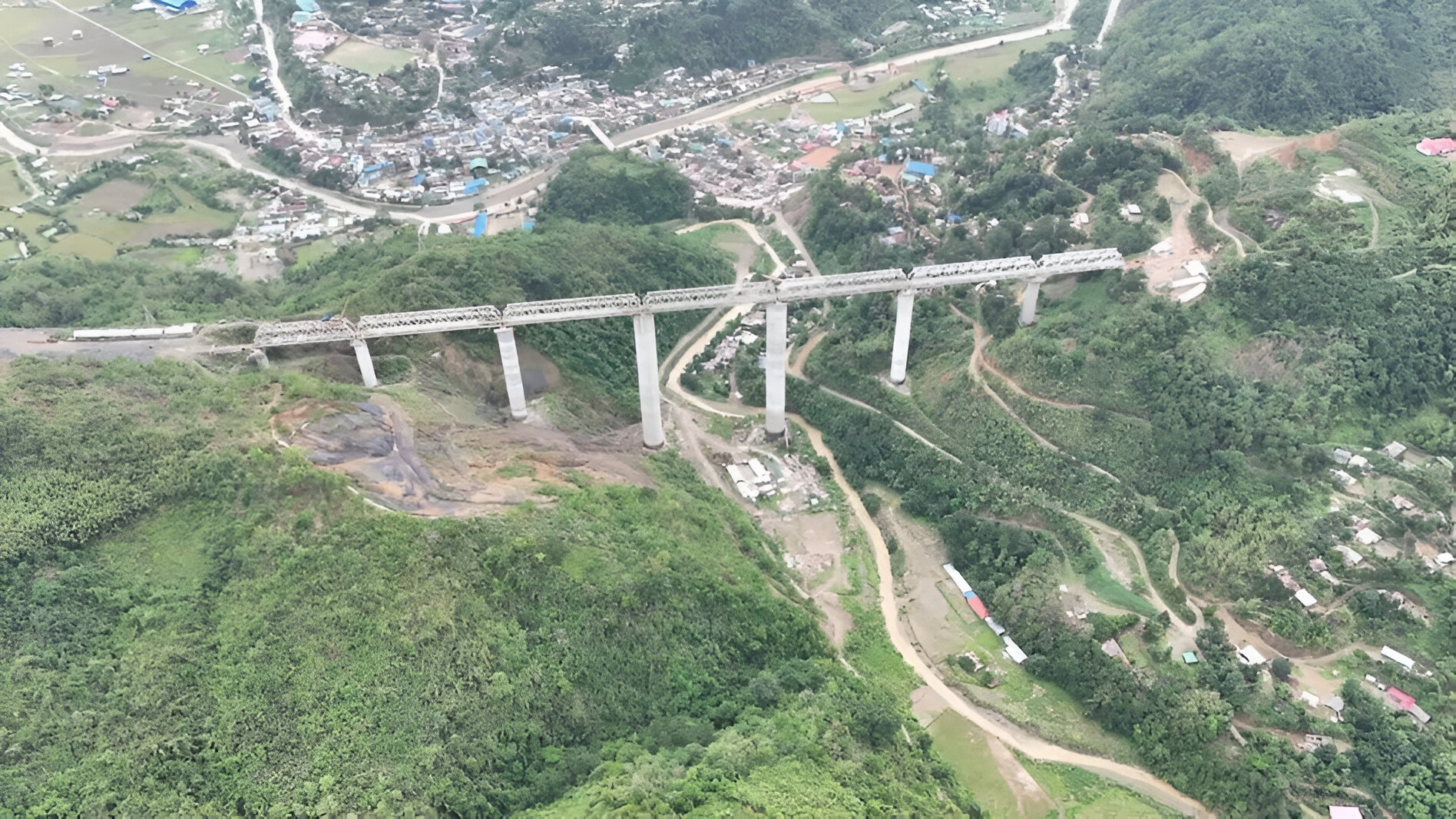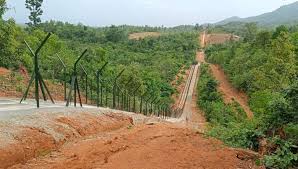World’s Tallest Railway Pier Bridge in Manipur: A Marvel of Modern Engineering
News Summary
On May 29, 2025, the Northeast Frontier Railway (NFR) achieved a significant milestone by completing the girder launching on the Noney Bridge in Manipur. Known as Bridge No. 164, this structure boasts the world’s tallest railway piers, P3 and P4, each standing at 141 meters. Part of the ambitious 111 km Jiribam-Imphal railway line project, the bridge is designed with steel spans arranged as 1×71.5m + 5x106m + 1×71.5m + 1x30m to ensure structural stability. The Jiribam to Khongsang section, spanning 55.36 km, has been operational for goods trains since September 2022. Future segments, including Khongsang-Noney (18.25 km) and Noney-Imphal (37.02 km), are slated for commissioning in the coming years. This development is poised to enhance connectivity and drive economic growth in the region.
Noney Bridge: A Testament to Engineering Excellence
The Noney Bridge, or Bridge No. 164, isn’t just another structure; it’s a symbol of human ingenuity and determination. Standing tall at 141 meters, it surpasses many iconic structures and showcases India’s commitment to infrastructural advancement.
Design and Structure
The bridge’s design incorporates steel spans configured as 1×71.5m + 5x106m + 1×71.5m + 1x30m. This configuration ensures optimal load distribution and structural integrity, allowing the bridge to withstand the challenging terrains and environmental conditions of the region
Global Significance
With its towering piers, the Noney Bridge has earned its place in the global records as the tallest railway pier bridge. This achievement not only highlights India’s engineering capabilities but also sets a benchmark for future infrastructural projects worldwide
Jiribam-Imphal Railway Line: Bridging Distances
The 111 km Jiribam-Imphal railway line is more than just a transportation route; it’s a lifeline for the people of Manipur.
Operational Segments
The Jiribam to Khongsang section, covering 55.36 km, has been operational since September 2022, primarily facilitating goods transportation. This operational segment has already begun to alleviate logistical challenges in the region
Upcoming Developments
The remaining segments, Khongsang-Noney (18.25 km) and Noney-Imphal (37.02 km), are under active development. Once completed, they will significantly reduce travel time and enhance connectivity, fostering economic growth and regional integration.
Navigating Challenges: Engineering Amidst Nature
Constructing the Noney Bridge and the Jiribam-Imphal railway line wasn’t without challenges. The region’s rugged terrain, unpredictable weather patterns, and logistical constraints posed significant hurdles.
Overcoming Terrain Obstacles
The hilly landscapes required innovative construction techniques and meticulous planning. Engineers employed advanced machinery and adaptive strategies to ensure the project’s progression without compromising safety or quality.
Weathering the Storms
Monsoons and heavy rainfall often disrupted construction schedules. However, the resilience and dedication of the workforce ensured that the project remained on track, showcasing their unwavering commitment.
Comparative Analysis: Noney Bridge and Global Counterparts
While the Noney Bridge stands tall in its own right, it’s enlightening to compare it with other monumental bridges worldwide.
Chenab Rail Bridge, India
Located in Jammu and Kashmir, the Chenab Rail Bridge is renowned for its height and arch design. While it stands at a height of 359 meters above the river bed, its piers are shorter than those of the Noney Bridge.
Millau Viaduct, France
The Millau Viaduct, one of the tallest bridges globally, has piers reaching up to 245 meters. However, the Noney Bridge’s distinction lies in its designation as the tallest railway pier bridge, emphasizing its unique engineering feat.
Future Prospects and Developments
The successful completion of the Noney Bridge sets the stage for further infrastructural advancements in the region.
Enhanced Rail Network
Plans are underway to extend the railway network, connecting more remote areas and integrating them into the national grid. This expansion will further stimulate economic activities and regional development.
FAQs
1. What makes the Noney Bridge unique?
The Noney Bridge is distinguished by its piers, P3 and P4, each standing at 141 meters, making it the world’s tallest railway pier bridge.
2. How will the Jiribam-Imphal railway line benefit the local population?
The railway line will enhance connectivity, reduce travel time, and facilitate the movement of goods and people, thereby boosting the local economy and improving access to essential services.
3. What challenges were faced during the construction of the Noney Bridge?
The project encountered challenges such as rugged terrain, unpredictable weather conditions, and logistical constraints, all of which were overcome through innovative engineering solutions and dedicated workforce efforts.
4. When is the entire Jiribam-Imphal railway line expected to be operational?
While the Jiribam to Khongsang section is already operational, the remaining segments are slated for commissioning in the coming years, with the entire line expected to be fully operational by December 2026.
5. How does the Noney Bridge compare to other famous bridges globally?
While bridges like the Chenab Rail Bridge and Millau Viaduct are renowned for their height and design, the Noney Bridge’s distinction lies in its status as the tallest railway pier bridge, highlighting its unique engineering achievement.





